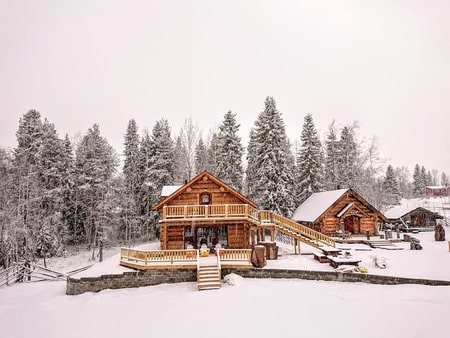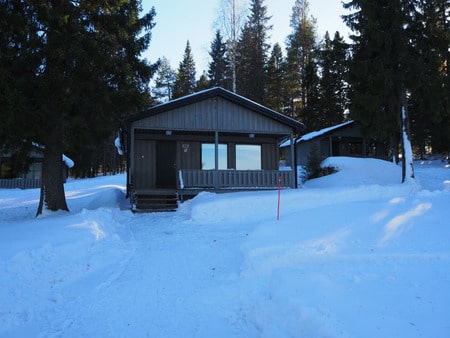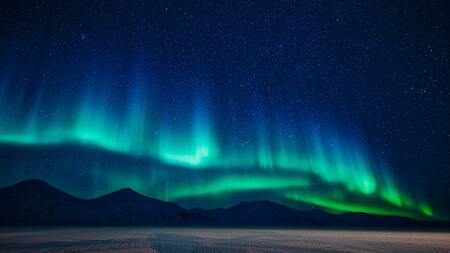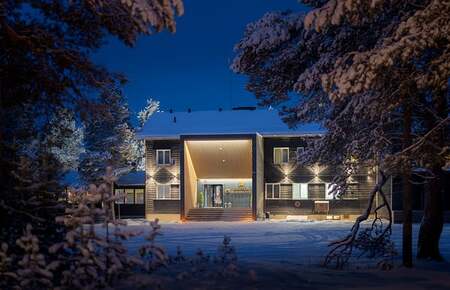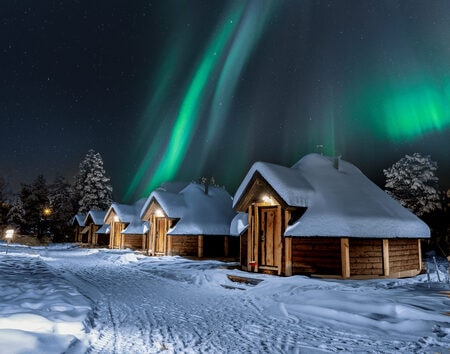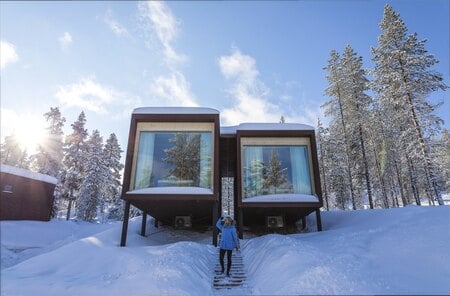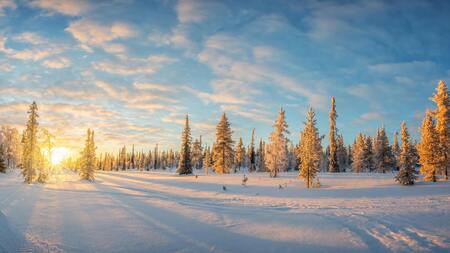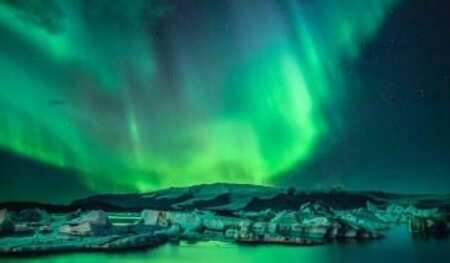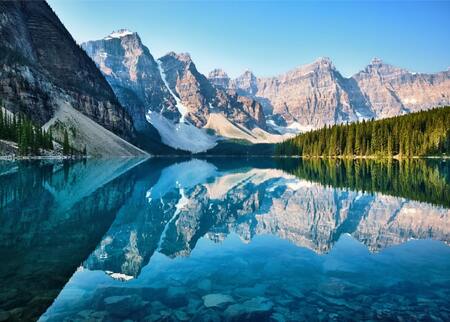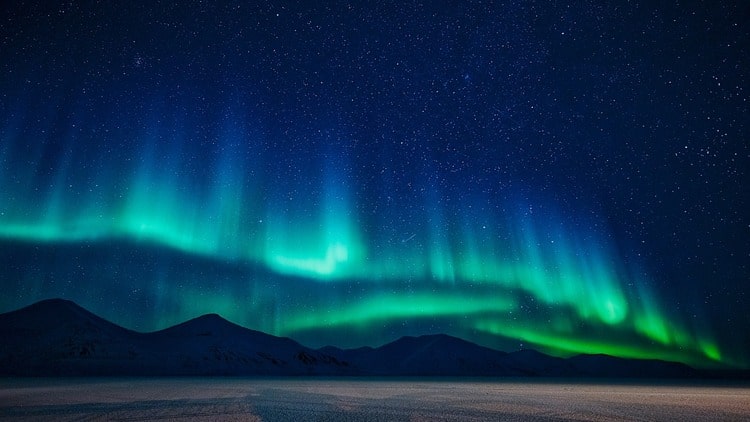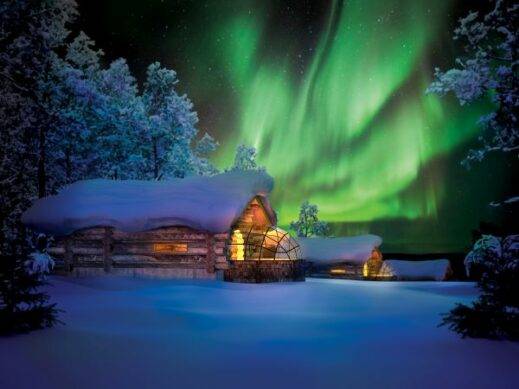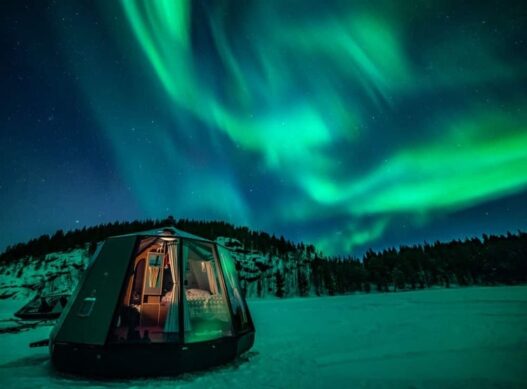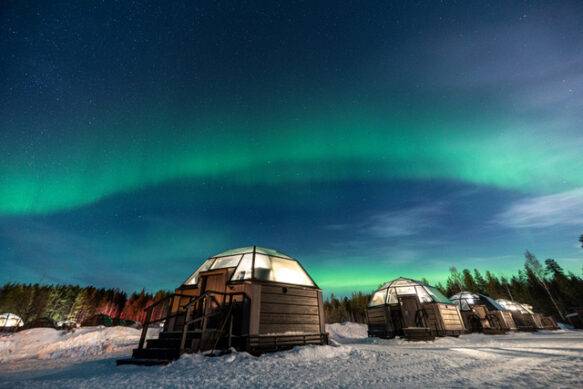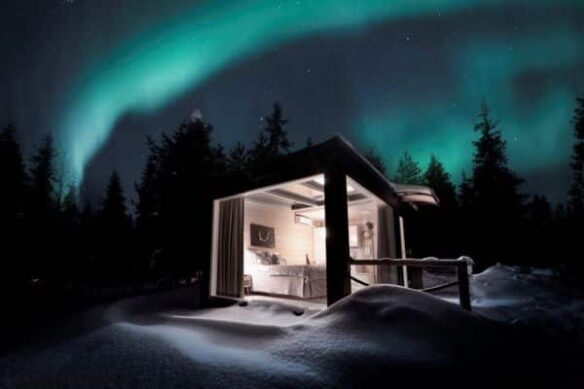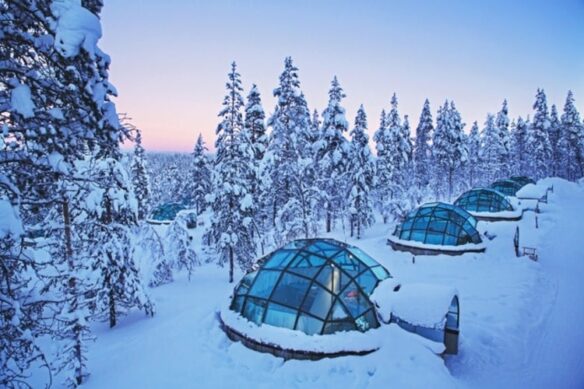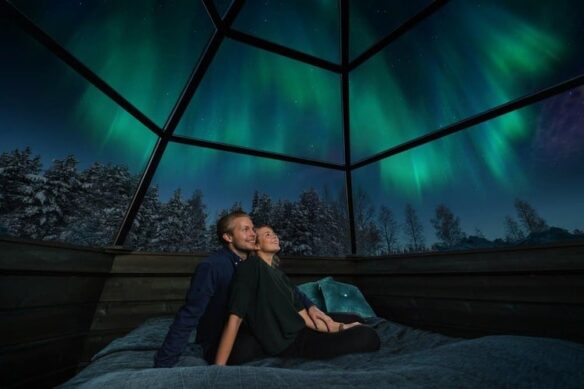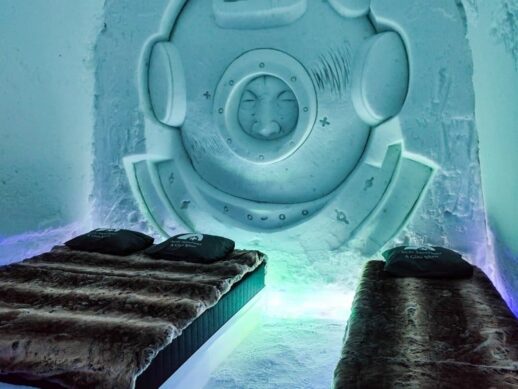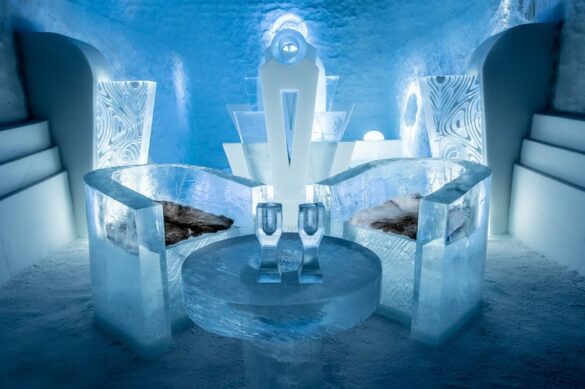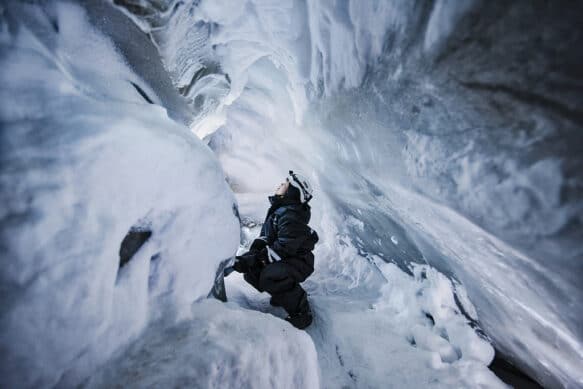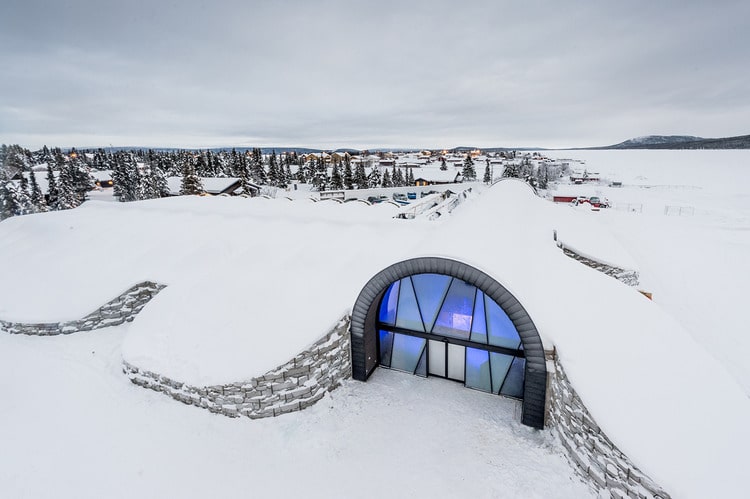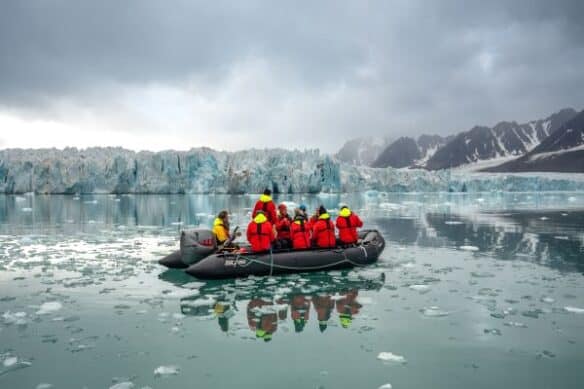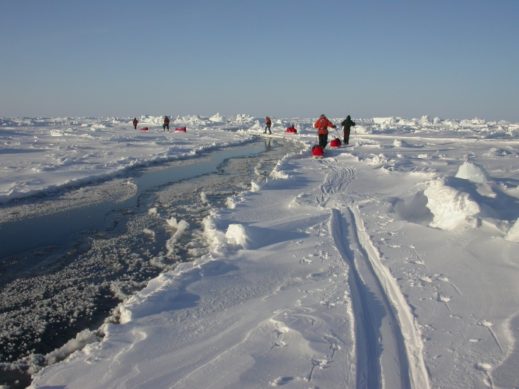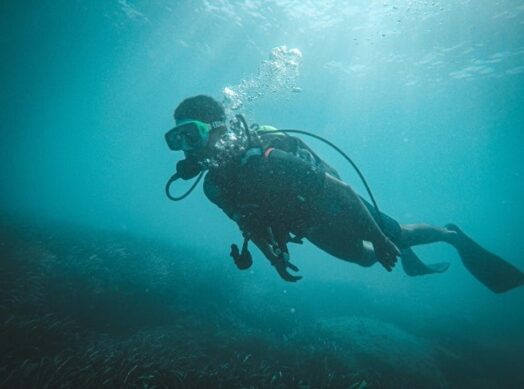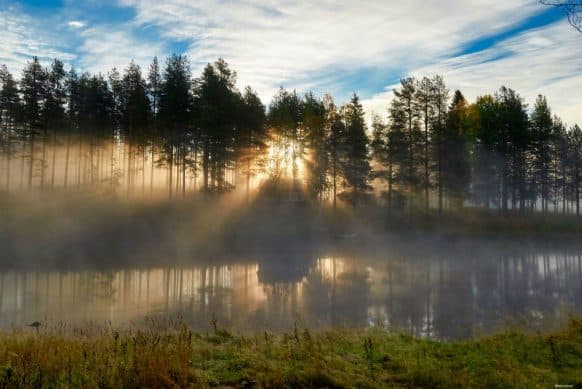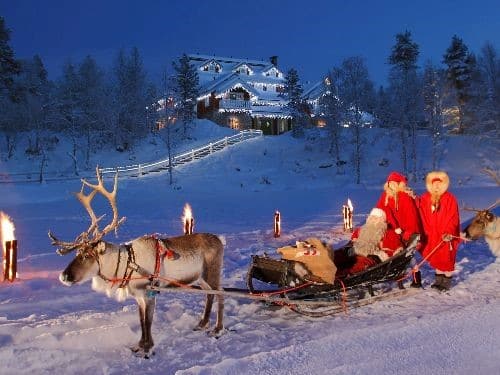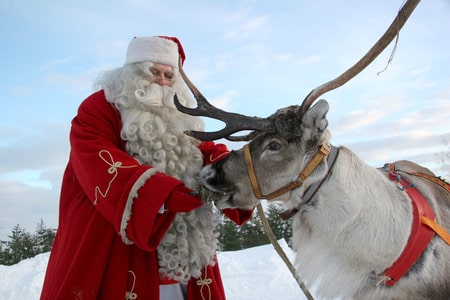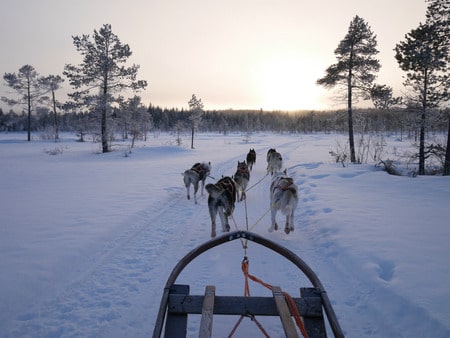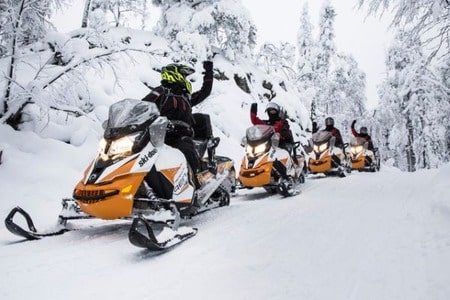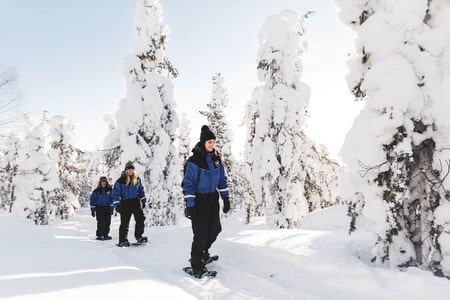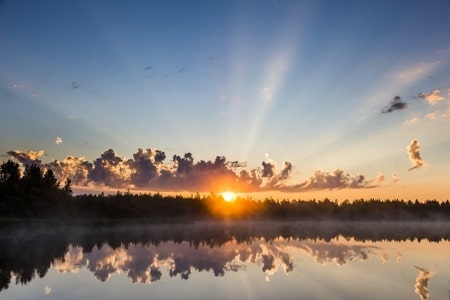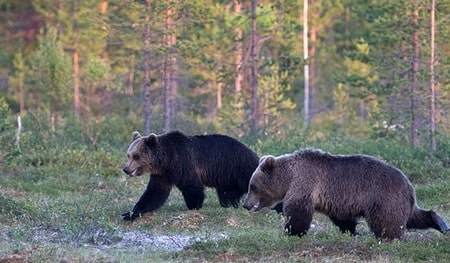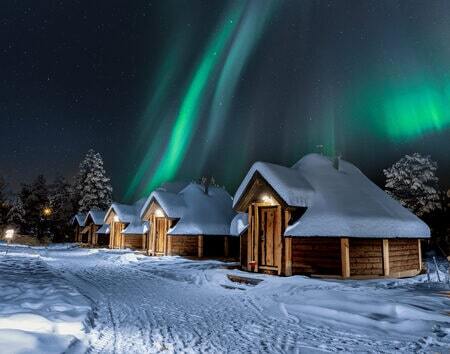Svalbard is great all year round. There are many different things to enjoy depending on when you visit, so there’s no one time of year as the best time to visit Svalbard.
For example, you can see the Northern Lights from mid-late September to mid-late March. During this period, you can also experience the wonders of the polar night from late October to mid-February. Even when all that time passes, Svalbard visitors can continue to enjoy the beautiful midnight sun from mid-April to late-August. Needless to say, there are plenty of things to do.
For more insight into the best time of year to visit Svalbard, and all the natural treasures to be discovered here, read on.
Month by Month Guide In Svalbard
January – Polar night is at its finest in January – the sun doesn’t come above the horizon for the whole month! This makes it a great time to see the Northern Lights, because they can be seen at any time of the day or night. Consider one of Svalbard’s ice experiences too, the perfect complement to a potential Aurora sighting.
February – On 15th February, the sun comes back, and by the end of the month, there is already nearly eight hours of wonderful daylight. Rest assured, February is a month of great change. Still, there will be many chances to see the Aurora, and to partake in winter activities. Many visitors, towards the last two weeks of February, take the opportunity to go on a Svalbard polar bear tour along the East Coast. Hopefully, you’ll see a few polar bears for yourself!
March – The first two weeks of March bring you the chance to look for polar bears along the East Coast, too, and you can still have a Northern Lights search in the evening. The daylight increases by about 20 minutes per day, which is more noticeable than you might think. By the end of the month, there is 15.5 hours of daylight per day. You may be less likely to see the Northern Lights, but this is where ‘sunny’ winter activities start to shine.
April – The midnight sun returns in April! Longer days and rising temperatures mean visitors can make the most of Svalbard’s scenery with full day activities, and if they’re not too tired, evening activities too.
May – This is the first month where the midnight sun is out in full force. Enjoy wonderful boat trips across Svalbard, and play in the heaps of snow that haven’t quite melted yet.
June – June is another full month of midnight sun. Here, the sunny winter ends and Svalbard enters its summertime! This is when boat trips really take off, and visitors enjoy hiking tours across places like Plateau Mountain. There is still plenty of glacial snow, too.
July – Relax under the golden glow of midnight sun, which is still high in the sky. It is the perfect month for discovering the local wildlife – walruses, birds, and puffins included – as well as fossil hunting across Svalbard’s many valleys and mountains. Why not try kayaking, or perhaps an overnight camping experience if you’re feeling especially adventurous?
August – August is the month the dark comes back. The days are still mostly very long, with the last few days of the month finally having brief nights. There are plenty of opportunities to partake in all your favourite summer activities, like boat trips and hiking, before the sunlight leaves again.
September – September marks a major change from 18+ hours of daylight at the beginning of the month to a mere 10 at the end. The Northern Lights aren’t quite at their best yet, but auroral activity tends to spike at the end of the month. Catamaran trips are popular at this time, as is sea fishing and wheeled dog sledging.
October – With October comes the early winter. The polar night returns, and your chances of seeing the Aurora increase exponentially! Catamaran trips still run, alongside electric bike tours and sightseeing. This tends to be a quieter month for tourism in Svalbard.
November – November is the season for the Northern Lights, with a chance to see the Aurora by day or night. Adventurers can embark on a Northern Lights search by dog sledge, snow cat, bike, hike, or even snowshoe.
December – As with November, the Northern Lights can be seen day and night in December. Consider trying a hike, bike, dog sled, snow cat, or photo tour.
The Best Time to Visit Svalbard To See The Northern Lights
To elaborate on our month-by-month guide above, the best time to visit Svalbard to see Northern Lights is late November to late January. This is when full polar night is at its strongest!
Visitors can witness the Aurora’s glory at any time of the day or night. Svalbard is quite unique in this regard; there are few other inhabited places where this is possible. Any time from October to mid-March provides ample opportunity to see the Aurora, too. Svalbard’s lack of light pollution really maximises your chances.
If your ultimate goal is to see the Northern Lights up close and personal, consider one of Arctic Direct’s Svalbard holiday packages, made with these once-in-a-lifetime experiences in mind.
The Best Time to Visit Svalbard To See The Polar Bears
 Polar Night Season
Polar Night Season
Polar night season is a popular time of year for people to visit Svalbard especially with many travellers who go in search for the Arctic polar bears.
There are over 3,000 polar bears in Svalbard, which means they exceed the human population. The best time to visit Svalbard to see polar bears – though we must be clear that you are not allowed to specifically search for polar bears or go on polar bear trips – is during the summer months. The ice starts to melt, and the polar bears go out to hunt. And as the water isn’t frozen in the summer months, you have great opportunities to also spot other wildlife by cruising down the vast coastlines.
A point to also bear in mind is that, if you encounter a polar bear outside of the city, you need to be cautious. If you are a novice to the area, you need to be accompanied by a guide. Locals always recommend being prepared with a flare gun and a high-powered rifle.
Svalbard Weather
Svalbard has what’s known as a subpolar climate along the West Coast, and a polar climate on the East Coast. Here, the temperature remains around freezing even in the summer months. The highest summer temperatures reach seven degrees Celsius!
Winters tend to be cold, dark, and full of glacial snow. The springtime is bright and still very snowy! By contrast, summers are bright and dry because of the midnight sun high in the sky. Whenever you visit Svalbard, it is important to dress warmly and appropriately for conditions at the time.
So, although we cannot organise any specific polar bear trips to Svalbard, you have a good chance of seeing them on an island of only approx 61,000 km2. And with approx 60% of Svalbard being a glacier, there is a lot to experience. To guarantee seeing arctic polar bears, why not visit Ranua zoo located in Finland. We offer a packages that includes unlimited access to the wildlife park for the duration of your stay.
So, what are you waiting for? Discover our Svalbard polar bear trips! & Get in touch with our travel experts.

